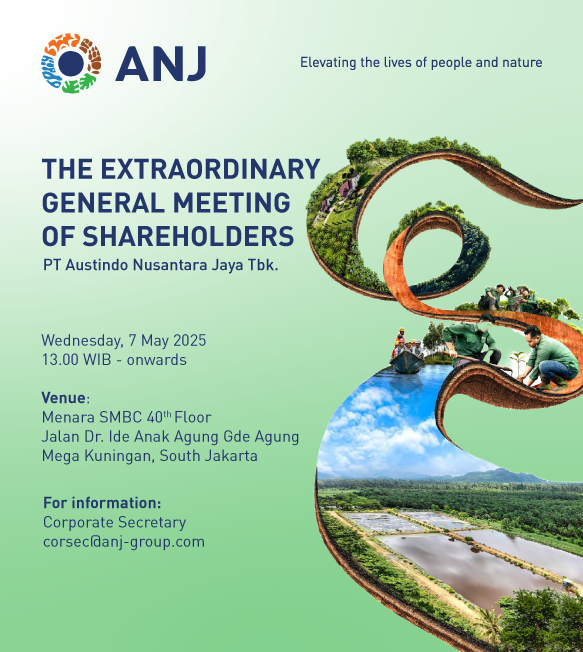


The key risks assessments by the Company in 2023 are presented in the table below, together with the ongoing mitigating actions. Any of the risks below could adversely affect our business, performance results, financial cash flows, financial condition, growth prospects and/or reputation.
With the inherent dynamics of the business environment, there may be other risks and uncertainties not currently identified as major risks to the business. These risks could emerge at any time and negatively affect the business; therefore, we are vigilant in anticipating emerging risks.
Fluctuations of CPO Price
| Risk | Mitigation |
|---|---|
|
CPO prices in the past few years have been fluctuative with high volatility and cyclicality. Naturally, the balance supply and demand of CPO would become the main key factor that could affect the CPO price. In addition, fluctuating weather patterns (such as dry spells or heavy rainfall) could affect palm oil production, which in turn affects prices. The dynamic global demand on other vegetable oils could also affect demand for CPO and influence the prices. Furthermore, the dynamic government regulation in palm oil including the biofuel mandates by the government of Indonesia, Malaysia and Thailand could also impact CPO prices. Factors that may potentially affect uncertainties in CPO price also include the extreme weather conditions, which may affect the supply going forward; environmental and conservation regulations; economic and demographic developments; population growth; per capita consumption; consumer awareness and preferences; as well as the global economy in general. In 2023, CPO price moved in a limited range of USD 700-900 per ton, after a positive movements in the last three years. Concerns about the impact of El Niño became major issue that affected the fluctuation of CPO price, although historically, the impact of El Niño will affect the palm oil production after six months to one year after that phenomenon occurred. Meanwhile, to support its green energy policy, the government of Indonesia has set to implement a B35 fuel policy in 2023. In the perspective of demand, this policy will increase domestic demand for CPO and will help in stabilizing the price. |
Management has anticipated the possibility of low commodity prices; we have therefore consistently focused on managing production costs and improving efficiency to mitigate the impact. We have been able to maintain our cash cost of CPO production within the range between USD 300/ton to USD 400/ton for the last 10 years despite inflation and increases in our input costs (such as wages, fuel price and fertilizer price) through agronomy innovation to increase the productivity and cost management. In addition, the Board of Commissioners has authorized management to enter into derivative forward contracts if we believe the CPO price trend is declining. The limitations of this in terms of mitigating the risk are: 1. the price range, volume for each contract and total volume are entered in due observance of the break-even price levels for the consolidated profit or loss and the palm oil segment; 2. the forward contract period may not exceed six months.Overriding these limitations requires the approval of theBoard of Commissioners. |
Increases in Labor Costs
| Risk | Mitigation |
|---|---|
|
We operate in a labor-intensive industry therefore the government regulations related with labor wages will significantly affect us. Labor costs are a significant component of our total production costs, typically accounting for about 30-40%. Ministry of Labor and Transmigration Law No.7/2013 stipulates that the minimum wage is determined and implemented annually by provincial governments based on the annual living cost conditions of each respective province. Further, Government Regulation No. 78/2015 specifies a measured annual wage increase based on current growth rates of inflation and gross domestic product. The government issued Law No. 6 of 2023 on the Stipulation of Government Regulation in Lieu of Perpu No. 2 of 2022 on Job Creation into Law. In Law No. 6 of 2023, the government added several articles that allow the government to change the minimum wage setting formula in certain circumstances. These articles create uncertainties that can negatively affect the Company. |
Since 2015, we have continuously introduced initiatives to mitigate annual labor cost increases, e.g: improving workers productivity, mechanization, digital data recording and mill automation. We introduced incentive programs to boost workers’ productivity and applied stricter standards to ensure that we harvest the FFB at the prime condition for higher extraction rates. We implemented harvesting mechanization in nonundulating plantation areas such as Belitung, North Sumatra I and Southwest Papua, and in our Southwest Papua sago operation. In our newest mill in West Kalimantan and Southwest Papua, we chose the most robust technology with automation possibility to reduce dependency on manual operation. We also transformed our production data recording with the Electronic Plantation Mobile System (EPMS) to reduce manual recording and to initiate paperless business process documentation. All these initiatives have also helped to mitigate the challenge posed by skilled labor availability constraints in our operating areas. |
Increases in Material Costs (Fertilizers and Diesel Fuel)
| Risk | Mitigation |
|---|---|
|
The most dominant material cost in agriculture is fertilizer and fuel. Fertilizer is required to ensure the plant gets the required nutrient to grow and produce in optimum level, where diesel fuel is required for the FFB transportation as well as for electricity in the area not connected by the electricity grid from the palm oil mill biomass turbine. Both the price of fertilizers and diesel fuels are affected by global supply-demand of petrochemicals, which is also high in price fluctuations. There are other factors affecting the price of petrochemical other than suppy-demand balance: crude oil production quota agreement, discovery of new reserves, global political tension and also regional crisis especially in the producing areas of oil and gas, such as Middle East, Eastern Europe and Russia. |
We have been embarking on reducing the usage of diesel fuel and combining inorganic fertilizer with organic fertilizer. In aiming to reduce dependency of chemical fertilizer, we have implemented composting technology to convert the empty fruit bunch into high quality organic fertilizer with the catalyst of microbes and enzymatic process. We believe organic fertilizer application from compost could maintain moisture and rejuvenate the soils, so dependency on chemical fertilizer could gradually be reduced. To reduce the dependency on fossil fuel, we improved the efficiency of biomass power plants by revamping the boiler turbine system for more efficient power generation and connected some of our locations with national grid system. We also developed our competency in running the biogas power plant in Belitung and we are planning to build another biogas power plant facility in two of our other site location within the next five years. Our target is to increase renewable energy portfolio to above 60%. |
Fluctuation in Foreign Exchange Rates
| Risk | Mitigation |
|---|---|
|
Our financial reporting currency is the US dollar and our sales are primarily denominated in US dollars, whereas our expenditures, including labor costs, are primarily denominated in Indonesian Rupiah. Due to this mismatch, any appreciation of the Rupiah against the dollar will reduce our net income and increase our expenditures in US dollar terms. In contrast, our subsidiaries that are still at the planting stage are required to use Rupiah as their operating currency, while their borrowing, if any, is denominated in either US dollars or Rupiah. Any appreciation of the dollar against the Rupiah will result in foreign exchange losses for these entities. |
Company policy allows us to enter into forward exchange-rate contracts to hedge against fluctuations, provided that any such contract does not exceed six months and the value of the contract does not exceed the amount of Rupiah needed for three months’ operational expenses. Regarding cash holdings, our general policy is to hold enough Rupiah for two weeks’ operational requirements, but we may increase our Rupiah cash holdings up to a maximum amount sufficient to cover up to three months’ operational expenses, if we judge the future trend of the Rupiah to be unfavorable. Since 2015, our policy has been that any borrowing by a subsidiary should be in the functional currency (i.e. bookkeeping currency) of that subsidiary. This has significantly reduced our exposure to foreign exchange volatility. For subsidiaries that maintain their bookkeeping records in Rupiah, we have converted their borrowings into Rupiah. While the interest rate for Rupiah borrowing is higher than for US dollar borrowing, we believe this policy enables us to measure currency risks and take action more promptly and effectively. |
Physical Climate Change (Adverse Weather, Crop Disease, Pests and Natural Disasters)
| Risk | Mitigation |
|---|---|
|
We recognize that climate change has direct physical impacts to the nature of our agribusiness operation. The plantation business is vulnerable to adverse weather conditions, natural disasters, crop disease, ecological imbalance, pests and other factors that can affect crop production and harvesting. Higher average temperatures and more extreme weather events have been observed for the last 30 years. Higher soil moisture evaporation and insufficient rainfall cause water deficit in the soil causing the palms to produce fewer flowers that develop into palm fruits. The higher average temperature also cause changes of behaviour by pollinator insects, which disrupt the pollination process causing imperfect forming of the fruit sets. We have experienced prolonged drought induced by El Niño, creating water deficits and decreasing our overall yield by more than 10%. This also increases the risk of uncontrolled wild fires spreading into the plantation. On the other hand, prolonged wet conditions and extreme rainfall events lead to waterlogging, excess water flow and flooding in low lying plantations adversely impacting crops and access infrastructure such as bridges and access roads. A prolonged rainy season also extends the period of certain seasonal crop pests and disease. |
We manage the risk of weather and climate-related disruption by establishing an early warning information system, applying agronomic best practices and strengthening our R&D for climate mitigation, technology intervention and mitigation infrastructures. We also commit to reducing our GHG emission as our corporate contribution to stop the climate change. We have been focusingon the use of high-resilience seeds in all new plantation developments; developing water catchment and gate systems to preserve water; composting application from empty fruit bunch to maintain moisture and rejuvenate the soils; implementing soil conservation and antierosion measures; planting beneficial crops to reduce weeds and pests. Recently we have successfully implemented pilot trial of drip fertigation combining fertilizer and irrigation to mitigate water deficit due to dry spells. We have put investment in fire prevention and mitigation infrastructures in areas with historical risk of fire, such as wide closed canals across our boundaries, water reservoirs and fire towers. We have also leveraged the advantages of remote sensing technology, such as satellite data and drones, for early fire detection. We also work closely with the local government and communities (Kelompok Tani Peduli Api) to prevent vegetation fires in the areas surrounding our plantations. To prevent severe impacts from flooding, we are building river bunds and performing periodic cleaning maintenance of debris in the river canals. |
Market, Regulatory and Transitional Risk of Climate Change
| Risk | Mitigation |
|---|---|
|
There is growing pressure from the market and regulation toward for corporations to be responsible for ESG practice, especially tackling climate change. We have positioned ourselves at the forefront on ESG practices and climate change mitigation among peers in palm oil industry. Related to the palm oil industry, the transition risk might include:
|
We recognize the transition risk inherent in changing our strategies, policies, business model or investments to adopt a business model with integration of ESG into business strategy, to reduce our carbon footprint and the impact to the climate. In order to mitigate this transition risk, we have conducted company rebranding in 2015 with brand focus on people and nature. We also revamped our Sustainability Policy in 2019 to realign our course of actions in achieving strategic objectives with ESG integration. We have consolidated our resources in a task force to conduct systematic ESG disclosures and performed public ESG rating in 2021. We achieved distinguished result in ESG disclosures and rating score; as one of the lowest ESG risks among our peers in palm oil industry. As of this year, we are setting ourselves ESG Ambition and Targets as an intergal part of our business strategy including a road map to achieve net zero carbon by the year 2030. |
Difficulties in Attracting or Retaining Qualified Staff
| Risk | Mitigation |
|---|---|
|
Our business success and growth depend on our ability to attract and retain highly qualified, skilled and experienced personnel in the palm oil industry. Our inability to attract, recruit, train and retain either experienced senior management or sufficiently qualified key personnel such as plantation or mill managers, field assistants and engineers could have a material adverse effect on our business, financial condition and operations. In addition, oil palm plantations require extensive labour. Harvesters and other plantation workers are increasingly mobile and if we are unable to hire and retain sufficient workers to maintain our workforce or if the minimum wage rate is increased significantly, our business and prospects could be adversely affected. |
We review our remuneration and benefit programs on an ongoing basis and benchmark them against the market and seek to improve our performance related pay program to help retain our employees and attract new candidates. We aim to ensure that our employees enjoy a good quality of life while working on our plantations, with a healthy and safe environment, comfortable living conditions, transportation, water, electricity, health care, clubhouse facilities, childcare facilities, training facilities and schooling. We also regularly update our learning and development |
Transportation or Logistics Disruptions or Mishaps
| Risk | Mitigation |
|---|---|
|
We typically sell our products on an ex-mill, ex-jetty or FOB basis and our customers transport the products they purchase from us. Any disruption of transportation services due to bad weather, strikes, lock-outs or other events could impair their ability to take delivery of our products or increase their freight costs, thereby making our products more expensive for them. Such disruptions may also result in storage problems at our plantations. It is our practice only to sell CPO once it is available for supply in our storage facilities, thus we rely on efficient transportation for timely off-take by our customers. Our West Papua businesses also present logistics and construction challenges, as those project areas are located mainly in the interior (palm oil) and in swampland (sago). Both are relatively far from any town or city and consequently, remote from reliable infrastructure and electricity supplies. |
We have made significant investments in developing flexible and reliable transportation systems and we only enter into transport contract agreements with reliable and experienced logistics companies. We anticipated the logistical challenges posed by our Southwest Papua businesses early in the planning process. Taking into account the size, remoteness and scale of economic investment, we established a dedicated department to improve logistics planning develop integrated logistics systems and create logistical synergies between our estates in order to reduce disruption risks. We also rent storage facilities in Dumai to enable us to export our product to foreign buyers requiring volumes that are economically sizeable enough for shipment. |
Delays in Land Compensation in Developing Plantations
| Risk | Mitigation |
|---|---|
|
develop our plantations and obtaining land cultivation right |
We seek to offer attractive compensation for the land, We completed the land compensation process for our |
Community Social Conflict and Land Disputes
| Risk | Mitigation |
|---|---|
|
Even after land has been acquired for a plantation or other uses, plantation owners commonly face contested land claims from people living or working on such land and are required to negotiate the payment of compensation with such claimants. Resolving such contested land rights issues can be a difficult and time-consuming process. |
We seek to build and maintain positive community relationships based on mutual benefit and respect and ensure that we use fair processes and proper administration procedures. We are implementing sustainable corporate social responsibility initiatives to support social and economic development in the communities close to our business operations. We also cooperate with NGOs on community development and environmental management and welcome input from various organizations to improve our programs. Through our CID department, we engage in regular communication and dialogue with community members to communicate the benefits of the Company’s presence and hear their concerns. |
Low Community Understanding of our Plasma Program Activities
| Risk | Mitigation |
|---|---|
|
Under the Indonesian Government’s Plasma Program, oil palm |
Our plasma program is based on cooperative ownership, which |